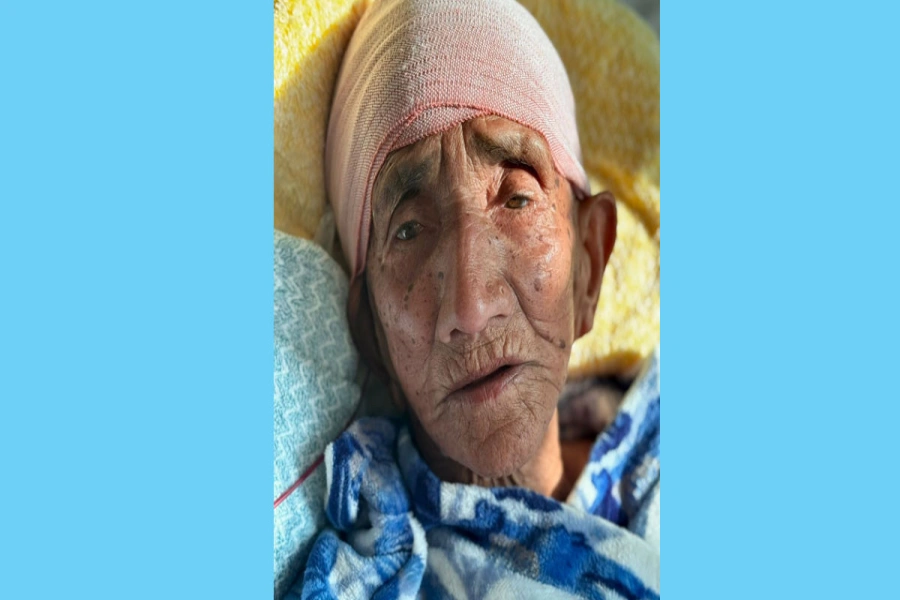Cracked heels are ugly. Silky hair and toned limbs are hard to achieve goals but so is attaining beautiful soft heels, especially for those who have struggled with cracked heels for years. Preventing these cracks is simple enough – you put on some Vaseline to moisturize the area and pull on some socks. But once the skin of your heels begins turning hard that’s when you know you’re in deep trouble. Not only do these cracks and calluses spoil the otherwise beauty of your feet, in extreme cases they are painful as well. The Week spoke to Dr Prashanna Raj Shrestha, consultant dermatologist at Ba La Skin and Hair Clinic, to learn how one can heal cracks or possibly prevent it altogether.
What are some reasons behind extreme cracked heels?
The area of skin on the heels is what we call a glabrous layer. Here there’s a lipid layer to tighten and bind the skin and the skin is, in comparison, thicker than the skin on the rest of the body. There are usually two agents that cause cracked heels: dryness of the skin (lack of moisture) and pressure on the feet. People who have dry skin and stand for extended periods of time (especially on hard surfaces and on hard sandals) usually develop cracked heels. The dryness lessens the elasticity of the skin and prolonged standing puts weight on the pads of the heels thus causing cracks. Also using open shoes and those with thin soles causes the heels to expand, which further increases the pressure. Obesity is another cause because it increases pressure on the fat pads and causes heels to expand sideways. Also it’s important to note that cracked heels may be symptoms of certain medical conditions such as Atopic dermatitis, Psoriasis, Palmoplantar Keratoderma, Juvenile plantar dermatosis and systemic diseases that can cause dryness like hypothyroidism. Underactive thyroid leads to inactive sweat gland meaning moisture is not released. Walking barefoot is also another factor.
Heels get an interesting twist

From the initial warnings to the cracks, how does it develop over time?
Initially the rims of the heels dry up and eventually thicken and harden. Calluses will appear over time in yellow or dark brown colors. After calluses, small cracks follow. They look like small cuts in the beginning but with time they deepen and widen. If left untreated these cracks bleed and cause excessive pain. So for cracked heels, the best way to deal with them is to prevent them. Once the cracks appear, restoring heels to as they were in the beginning is impossibly difficult. In some cases, the bleeding and exposure lead to infection and that is when one must absolutely pay a visit to their dermatologist or podiatrist.
For people with extreme cracks, what would be your advice?
Extreme cracks are when the skin of the heels appears like gashes of wounds. We have had cases where these gashes bleed and get infected because of improper medical attention. Usually unavoidable working/living conditions such as places with low humidity levels, hard surfaces and more cause extreme cracks. For farmers, working on farms without proper footwear and exposure to the soil, cracks are inevitable. For those forced to work in such conditions, eliminating or diminishing the conditions is the most pragmatic approach. Wear soft padded sandals and try to cover your feet at all times, most preferably with some moisturizer applied. Also, one should avoid excessive exposure to cold water in the winters months.
How can cracks be treated?
Using generous amounts of foot cream two to three times a day is the way to go. But be mindful of the composition of your cream. The foot creams should contain humectant (it has water retaining properties thus helping with moisture) and keratolytics (it thins out the thick scales). Urea is a dead skin exfoliator so look for that in your creams too. Besides urea, look for creams with lactic acid, salicylic acid, alpha hydroxy acid and saccharide isomerate.
For mild cracks
Soak your feet in lukewarm water for 10 to 15 minutes and then dry your feet well. Use a pumice stone to gently rub the callus (thick hard skin). Use socks as far as possible and try to keep your feet moisturized. Liquid gels or spray bandage can be used to reduce pain, protect and allow for more rapid healing. Sometimes self-treatments show no results. In such cases get a medical diagnosis. Your cracked heels may be the result of a health condition. Occlusive therapy is the means to trap in moisture. Petroleum jelly traps moisture but does not add to it. So use good moisturizer and wear socks at all times.
For extreme cracks
These cracks absolutely need medical attention. Debridement, cutting away of hard thick skin is done and this should not be attempted at home using scissors or razor blade as there is a risk of
removing too much skin and thus getting an infection. Strapping – bandage/dressings around the heel to reduce and constrict skin movement is another option. The doctor will be able to write you
a prescription for stronger softening or debriding agents, usually containing urea or salicylic acid. Insoles, heel pad or heel cups can be used to redistribute the weight of the heel and provide better support. Special tissue glue can be used to hold the edges of the cracked skin together so it can heal.





































